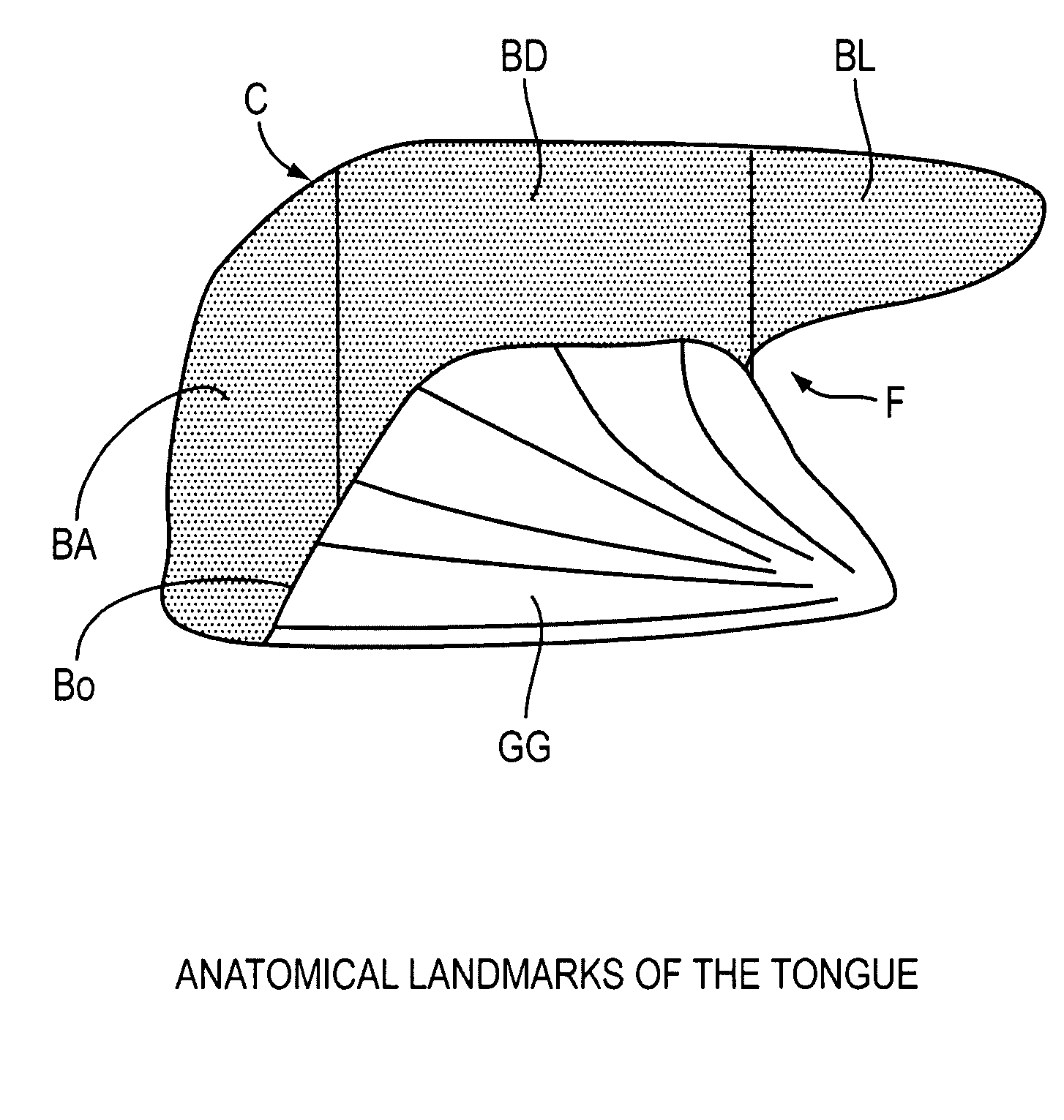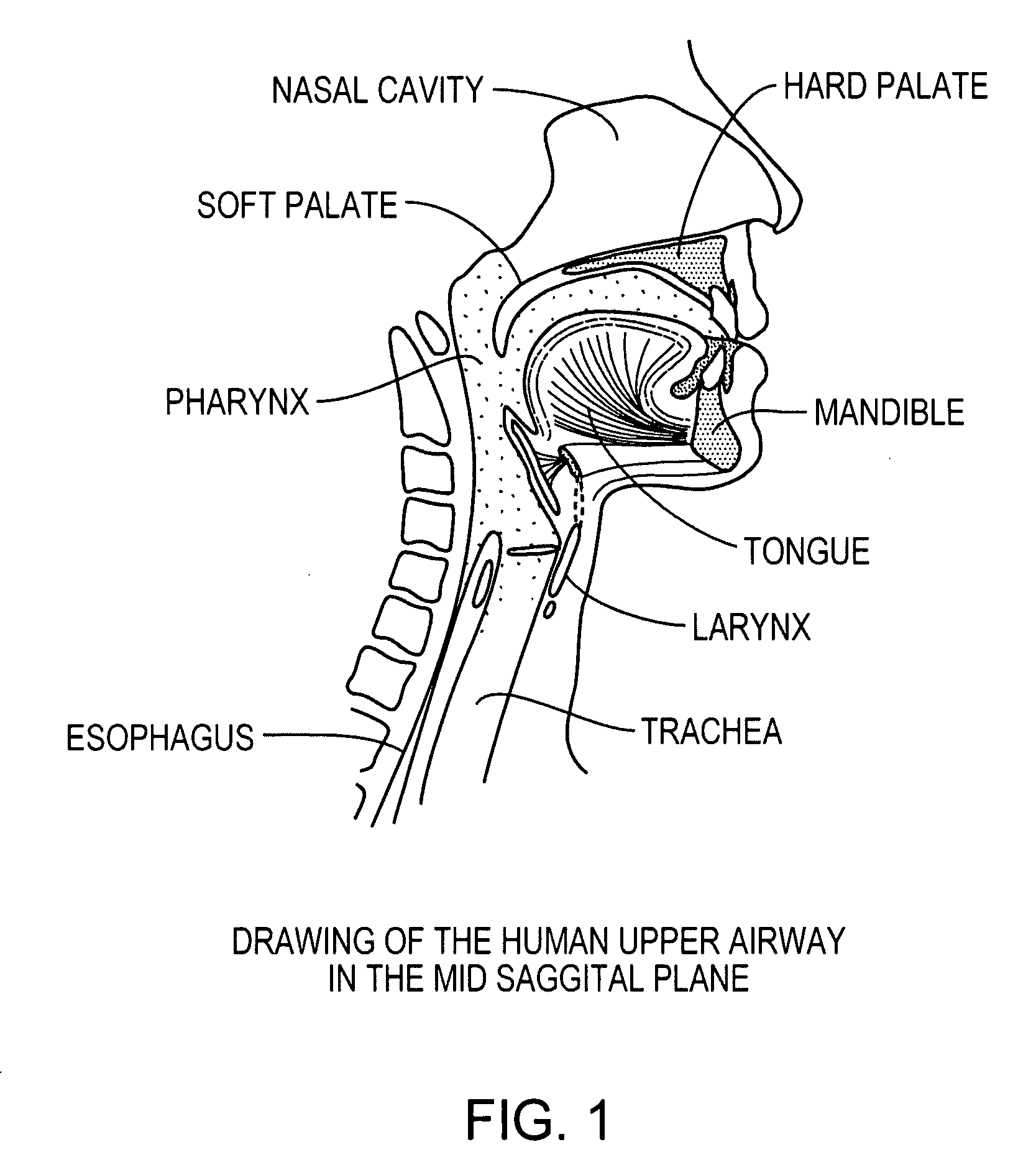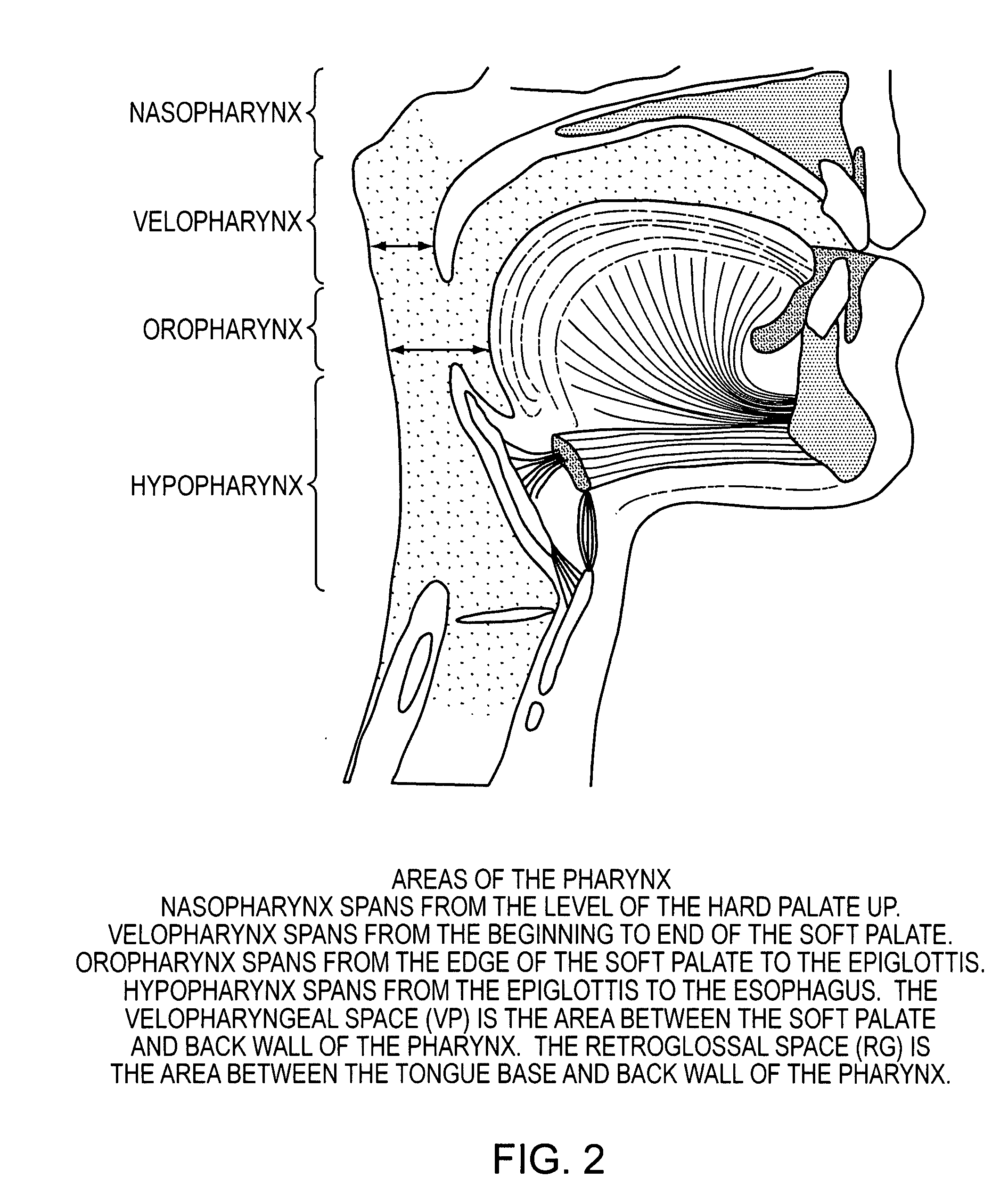Methods and Devices for Treating Sleep Apnea and Snoring
a technology sleep apnea, which is applied in the field of methods and devices for maintaining upper airway patency, can solve the problem that no single method and device is able to treat all contingencies, and achieve the effects of reducing invasiveness, reducing invasiveness, and reducing invasiveness
- Summary
- Abstract
- Description
- Claims
- Application Information
AI Technical Summary
Benefits of technology
Problems solved by technology
Method used
Image
Examples
examples
1. Retractor Member (FIG. 6)
[0273] Disclosed here is a retractor member that is inserted by a needle and automatically deploys to its working shape.
[0274] The retractor head prevents the tongue base from deforming. The preferred qualities for a retractor head that rests upon tongue base mucosa are that its depth is minimal so that it is not noticeable to the patient yet its surface area is large enough to provide sufficient counterforce. Integral to its design is the delivery device used to insert the LTR. It is preferable that the entire device be inserted from the anterior tongue with minimal instrumentation used at the back of the tongue. Therefore the retractor head preferably automatically deploys to its working shape after being implanted by a needle inserted from the front of the tongue.
[0275] Part of this aspect of the invention includes improvements in the design of the retractor head that allow it to be easily inserted. In certain embodiments this insertion would be by ...
PUM
 Login to View More
Login to View More Abstract
Description
Claims
Application Information
 Login to View More
Login to View More - R&D
- Intellectual Property
- Life Sciences
- Materials
- Tech Scout
- Unparalleled Data Quality
- Higher Quality Content
- 60% Fewer Hallucinations
Browse by: Latest US Patents, China's latest patents, Technical Efficacy Thesaurus, Application Domain, Technology Topic, Popular Technical Reports.
© 2025 PatSnap. All rights reserved.Legal|Privacy policy|Modern Slavery Act Transparency Statement|Sitemap|About US| Contact US: help@patsnap.com



